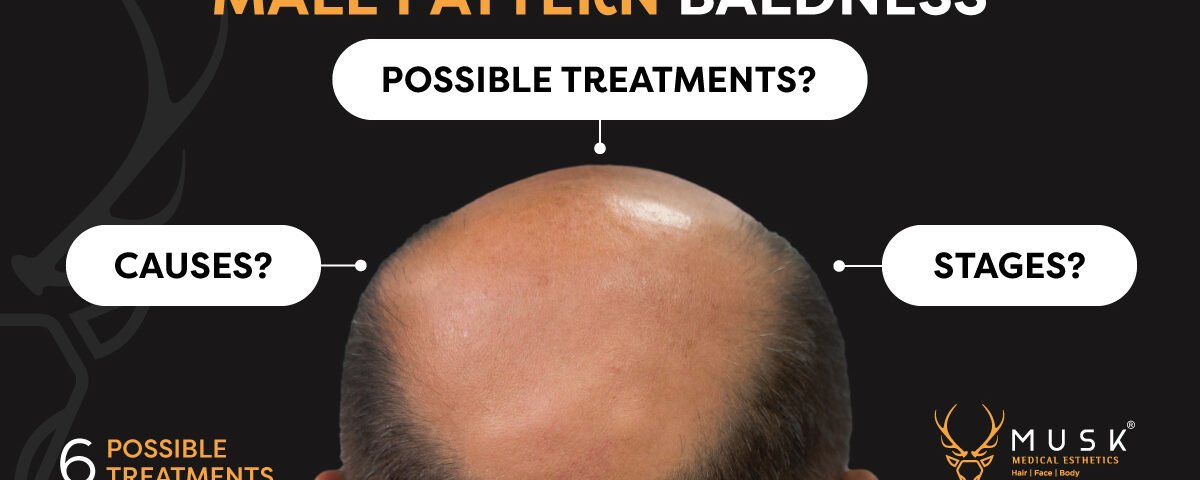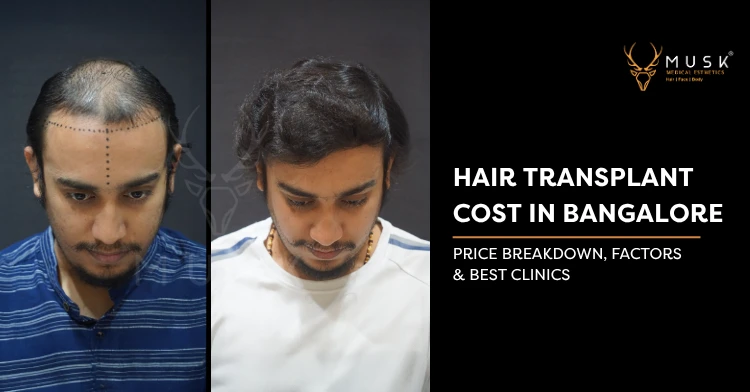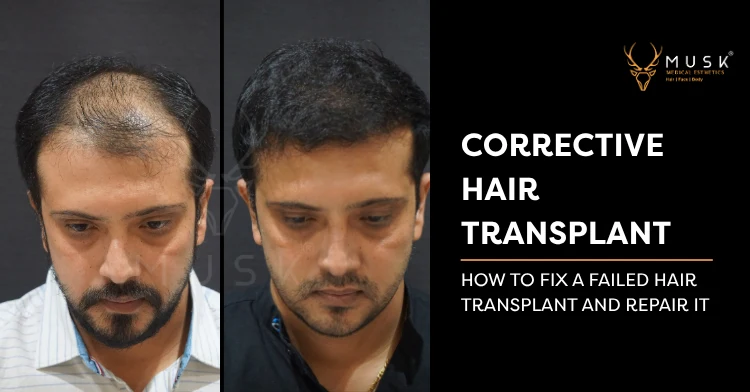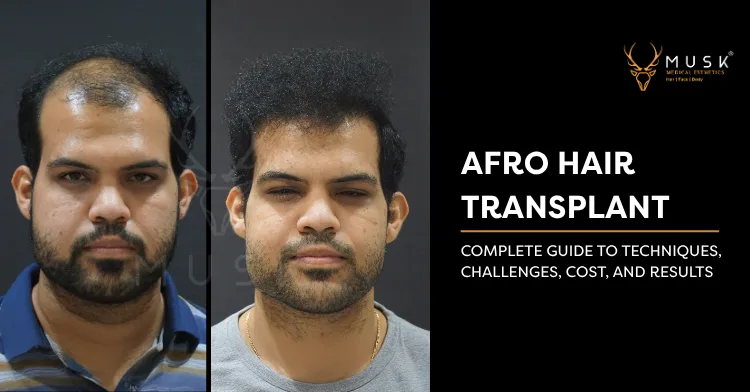Male Pattern Baldness: Causes, Stages, and Possible Treatments

If you’ve noticed that your hairline starts becoming thin, your crown area becomes wider, a new bald spot appears, or saw more extra hairs in your hairbrush, then male pattern baldness is the reason behind it.
Almost all men have some hair loss problem when they are in their 50s and even it is quite common to lose your hair and almost go bald in your early twenties due to certain medical conditions.
But the question is how Male Pattern Baldness occurs.
At the time of baldness, the hair follicles start becoming smaller and the thin stump of hair does grow out of the skin which causes patches in different areas of the scalp. There are many more reasons for baldness.
For that Let’s go through the whole blog to clear all the queries.
What is Male Pattern Baldness?
Male pattern baldness is considered a minor medical condition, which appears to be common in every male between their 30s and 50s. Androgenetic is the other name for male pattern baldness.
From hair loss on the top of the crown to receding hairline on the head, baldness starts over the head in different areas.
It begins to get thin from the temples of the head, then hair starts becoming thin on the top of the head. The receding side and bald parts both join together and leave a patch in front of the head.
Hair baldness is caused due to changes in the normal hair growth cycle. During the normal hair growth cycle, new hair grows within a few days of hair falling, but in baldness, the chance of growing new hair is low in the affected area of the head.
What Causes Male Pattern Baldness?
There is no particular reason behind the cause of Male Pattern Baldness, sometimes it is caused due to certain Medical Conditions, or even due to the interaction of hormones, genetics, and age. Despite these, there are many more reasons for male pattern baldness few of them are: –
Genetics
Genetics is among the main reasons for hair loss problems in males. Due to this sometimes even they start losing their hair in their 20s and if someone in the family has a history of male pattern baldness or suffering from the hair loss problem, then it increases the chance of baldness in an individual.
Male sex hormones (androgens)
Testosterone is the male hormone that causes hair loss problems. 5 Alpha-reductase is the hormone that is present in the hair follicles basically, it converts the testosterone into Dihydrotestosterone (DHT). DHT is the most powerful androgen which promotes the common pattern of male baldness.
Thyroid problem
The person who is suffering from Thyroid is going through many hormonal changes which lead to problems with hair growth, such situations are Hypothyroidism or hyperthyroidism which causes excessive hair loss problems.
Alopecia Areata
Alopecia Areata is a disorder that affects the wider area of the scalp, it is a well-known auto-immune disorder that results in hair loss problems. Usually, it occurs in patchy bald spots all over the scalp.
Stress
Taking too much stress causes androgenetic alopecia, it creates a hormonal imbalance in the body, which affects normal hair growth and causes hair loss.
Unhealthy lifestyle
An unhealthy lifestyle also creates an impact on the growth and loss of hair. We are all aware that hair is made up of keratin and it requires a form of protein and minerals to make its strength and good quality, but at a time of protein scarcity, it forces the hair fibers into the resting phase due to which growth of hair stops and probability of hair fall increases.
Scalp infections
Fungal Infection on the scalp is also an important reason behind the male hair’s baldness, it affects the normal growth of the hair which results in hair thinning.
Who is at Greater Risk of Male Pattern Baldness?
Male Pattern Baldness depends on genetics, hormone, or the age of the individual, but usually adult men suffer from this. In 80% of cases, genetics plays a huge role in baldness especially when the family member is from the maternal side.
Even it is suggested from some of the studies, that due to covid 19 pandemic male pattern baldness increases as it is commonly caused due Telogen Effluvium.
How is Androgenetic Alopecia diagnosed?
To Diagnose Androgenetic Alopecia in individuals, they need to go for a scalp examination, as it helps to determine the problem behind the hair follicle’s health.
In the medical world, there are only a few treatments available to diagnose Androgenic Alopecia and those are: –
- Applying lotion like Minoxidil and Rogaine over the scalp is an effective medication process to treat Androgenic hair loss problems.
- The latest innovation in the field of hair loss treatment is Redensyl, an advanced solution for hair regrowth.
- Oral Medication is also a good option as it reduces the production of hormones that cause hair loss. Medicine like Finasteride is advised to take.
- Despite all this, the most effective and expensive treatment for this is a hair transplant to cure the condition.
Stages of Male Pattern Baldness:
In our daily lives, we never feel hair loss is a big problem, even though we don’t have any idea about how many stages we have gone through. Suddenly with time, we start feeling that our hair becomes thin day by day. So, every person needs to have an idea about the stages of the male pattern baldness.
In general, there are 7 stages of the Male Pattern Baldness they are as follows: –
Stage1: Unnoticeable Hair Thinning Around the Temple
During this stage, the changes are unnoticeable, but individuals start losing hair around the temple area and the forehead which is the early sign of male pattern balding.
Stage 2: Hair Thinning & M-shaped Hairline
Stage 2 is also known as the front baldness or thinning of hair around the crown area. Now in this stage, an individual starts noticing more thinning around the temple area and forehead. In short, your temple area becomes more visible and your forehead becomes wider, even though it is also an unnoticeable stage.
Stage 3: Visible Balding & Recession of the Hairline to Form M, U & V Shapes
Hair baldness stage 3 is also called stage 3 Vertex of male pattern baldness.
In this stage shapes like M, U, Or V start forming around the head, it widens up the forehead and shows Bald spots on the head.
Stage 4: Massive Hair Loss at The Back of The Head
In this stage, an individual started losing hair in a huge amount. The Bald spots are clearly visible, the hair around your crown area starts becoming thin, and at the back of your head, large patches start forming due to excessive loss of hair.
Stage5: Horseshoe or U-shaped Hairline at the Crown of Your Scalp
Stage 5 is the most challenging stage to treat. In this stage, your hairline is turned into a horseshoe-shaped or u-shaped. The balding problem became so severe at this stage that it took time to show the immediate or visible effect of the treatment.
Stage 6: Visible Scalp & Enlarged Bald Patches
In this stage of baldness, individuals suffer from large bald patches around the head. To get rid of baldness, one needs to go through the procedure of hair scalp reduction treatment, which reduces the bald part on the scalp and tries to bring the hair growth part together. Despite this, you can go through the micro pigmentation and hair transplant option.
Stage 7: Hairline Receded to the Crown & Very Little Thin Hair
At this stage, one remains with a small part of hair remaining on the side, as they lost most of their hair.
Is Androgenetic Alopecia permanent?
There are treatments available to diagnose Androgenetic Alopecia, but the hair follicles which are already affected by it can’t re-grow back, as they are permanently damaged.
Is Male Pattern Baldness Inherited?
DHT Dihydrotestosterone a male hormone, plays a huge role in the male pattern baldness, as it is directly linked with the androgen receptor gene, which has a great impact on androgen in the body and causes baldness on the scalp.
Male Pattern Baldness Treatment:
Many different types of hair treatments are available to treat the conditions like Chronic hair loss, hair thinning, or patchy bald areas. One can go through Surgical as well as non-Surgical treatment according to their preference.
Non-surgical Treatment for Male Pattern Baldness:
- Minoxidil for Male Pattern Baldness Treatment:
The other name of Minoxidil is Rogaine, it is a lotion-based medication. Usually, the surgeon suggested applying it twice a day and approx. for 3 to 6 months for better results. It helps to reduce hair loss which is caused by hair follicles.
- Finasteride for Male Pattern Baldness Treatment:
Finasteride helps to reduce DHT and the progression it causes in the hair follicles. It takes more than 6 months to show results.
- Laser Treatment for Male Pattern Baldness:
Laser treatment helps to increase blood circulation and even increases hair follicle growth by reducing hair loss.
- PRP:
Platelet Rich Plasma Therapy is the most popular non-surgical option which is based on a deeper understanding of wounds and tissue healing. By performing this treatment for hair, the main aim of the physician is to implant new hair follicles into an active growth phase which leads to the growth of hair.
Surgical Treatment for Male Pattern Baldness:
This treatment is completely based on the condition of male pattern baldness. In this process, the surgeon brings out the hair follicles and transplants them into the bald area of the scalp. It depends on the severity of one’s condition and how many follicles are needed during the transplant.
Some of the most recommended surgical treatments are: –
- ARTAS 9X Robotic Hair Transplant:
It is the world’s most advanced and well-known robotic Hair transplant technology. It helps the physician in treating the Follicular Unit Extraction (FUE) hair transplant Procedure with accuracy and consistency which allows the maximum preservation of follicles.
- FUT:
Follicular Unit Transplantation (FUT) is a procedure that involves the transplanting of a patient’s natural hair from the permanent zone to the Back and sides area of the scalp where the hair is more prone to balding areas of the scalp. The whole procedure occurs with a group of 4 hairs which are termed Follicular Units.
Final Words
Male Pattern Baldness has become more common these days. There are many different kinds of reasons which cause it, but the most common reason is a lack of consuming nutritious food in meals and not noticing the problems on time. We all have a habit of ignoring things but sometimes it creates or causes huge problems in our bodies.
Even consuming alcohol and smoking cigarettes made male vertex week which is also one of the reasons for Male Pattern Baldness.
But now no need to worry about this anymore, because many treatments come in the medical world to diagnose Male Pattern Baldness. Despite these Scalp reduction, hair transplants, and micro pigmentation are the most recommended surgical treatments.
If you’re still unsure or having quarries related to Male Pattern Baldness then, feel free to reach out to us at Musk Clinic.
At Musk, With the help of the latest technology in hair transplant, we believe that hair problems like hair thinning and hair loss don’t have to be permanent problems. Equipped with the latest technology of PRP and ARTAS 9X Robotic, we provide comprehensive hair treatments in Ahmedabad from which you can achieve your thickest, fuller hair.
Get in touch with our best hair surgeon and Best Hair Treatment in Ahmedabad, Gujarat at Musk Clinic.
We’re Gujarat’s one of the few certified clinics offering a completely safe Hair treatment for hair loss. For more information, get in touch with our experts.











